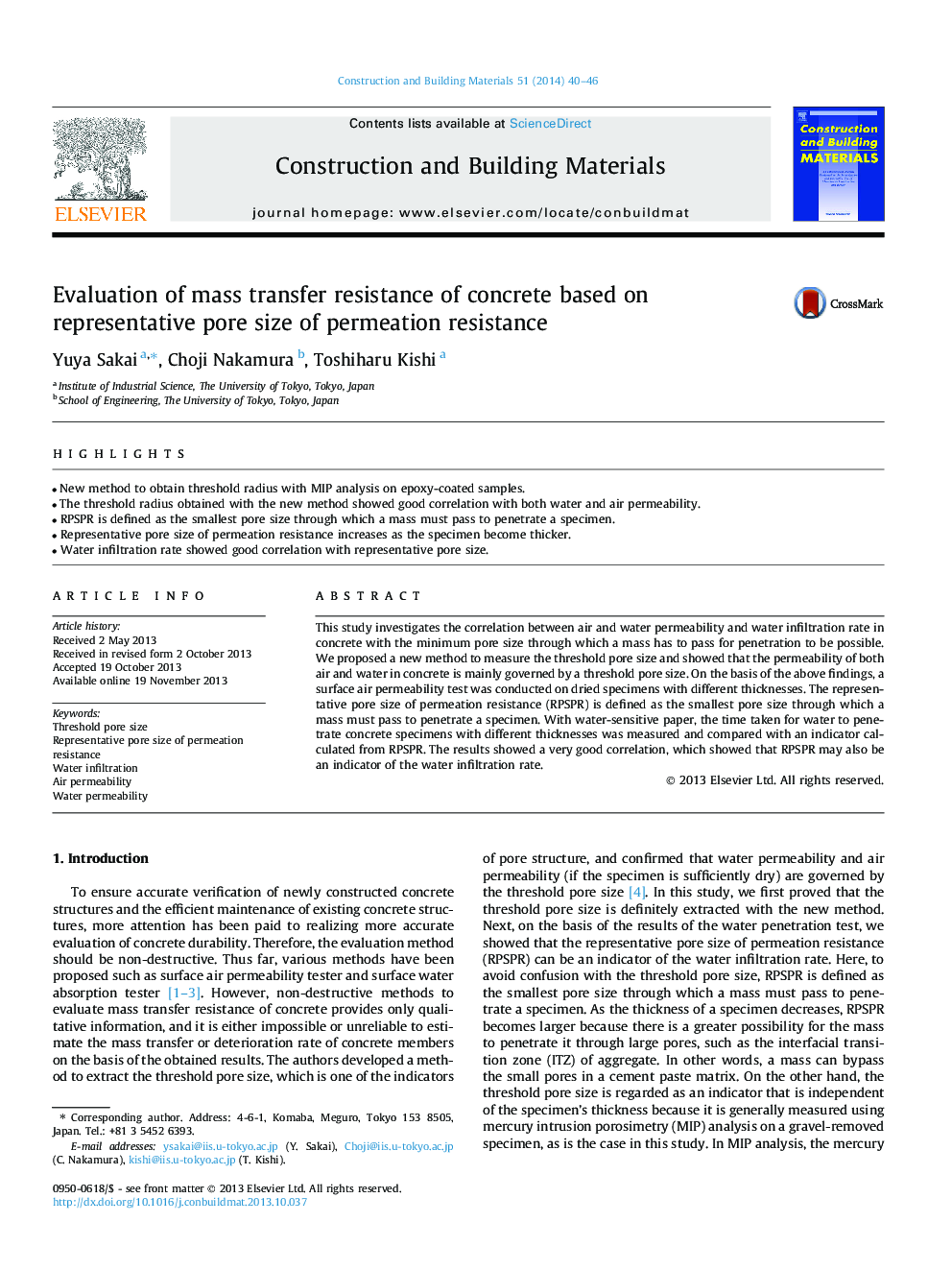| Article ID | Journal | Published Year | Pages | File Type |
|---|---|---|---|---|
| 257947 | Construction and Building Materials | 2014 | 7 Pages |
•New method to obtain threshold radius with MIP analysis on epoxy-coated samples.•The threshold radius obtained with the new method showed good correlation with both water and air permeability.•RPSPR is defined as the smallest pore size through which a mass must pass to penetrate a specimen.•Representative pore size of permeation resistance increases as the specimen become thicker.•Water infiltration rate showed good correlation with representative pore size.
This study investigates the correlation between air and water permeability and water infiltration rate in concrete with the minimum pore size through which a mass has to pass for penetration to be possible. We proposed a new method to measure the threshold pore size and showed that the permeability of both air and water in concrete is mainly governed by a threshold pore size. On the basis of the above findings, a surface air permeability test was conducted on dried specimens with different thicknesses. The representative pore size of permeation resistance (RPSPR) is defined as the smallest pore size through which a mass must pass to penetrate a specimen. With water-sensitive paper, the time taken for water to penetrate concrete specimens with different thicknesses was measured and compared with an indicator calculated from RPSPR. The results showed a very good correlation, which showed that RPSPR may also be an indicator of the water infiltration rate.
